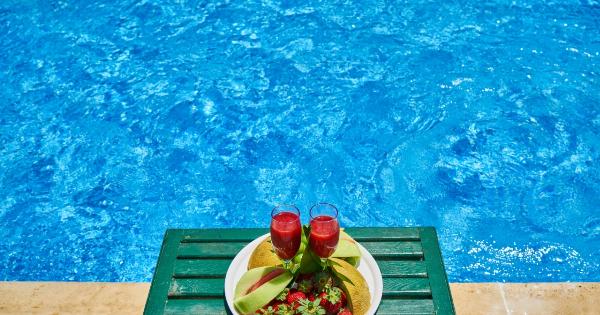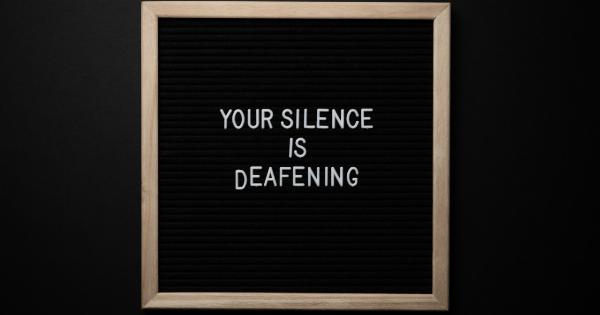With the rise in global temperatures, heatstroke has become a prevalent concern. Heatstroke occurs when the body’s temperature regulation mechanism fails, leading to a dangerously high body temperature.
It can be life-threatening if not addressed promptly. In this article, we will discuss how to stay safe in high temperatures and prevent heatstroke.
1. Stay Hydrated
One of the most important ways to prevent heatstroke is to stay well-hydrated. Dehydration can increase the risk of overheating, as our bodies rely on sweat to cool down. Ensure that you drink plenty of fluids, even if you don’t feel thirsty.
Water is your best choice, but you can also opt for sports drinks that contain electrolytes to replenish the minerals lost through sweat.
2. Dress Appropriately
Wearing the right clothing can make a significant difference in preventing heatstroke. Opt for loose-fitting and lightweight clothes made of breathable materials such as cotton.
This allows air to circulate and enhances sweat evaporation, which helps cool down the body.
3. Avoid Direct Sunlight
During peak hours of the day, typically between 10 a.m. and 4 p.m., it is advised to stay indoors or seek shade to avoid direct sunlight.
If you need to be outside, try to find shaded areas or carry an umbrella to shield yourself from the sun’s rays. This reduces the risk of heatstroke by minimizing exposure to extreme heat.
4. Plan Outdoor Activities Wisely
If you must engage in outdoor activities, plan them during cooler parts of the day, such as early morning or late evening. Exercising or performing strenuous activities in the scorching heat can quickly lead to heat exhaustion or heatstroke.
Moreover, take frequent breaks, find shade whenever possible, and listen to your body’s signals.
5. Use Sun Protection
Protecting your skin from the sun’s harmful rays is crucial when trying to prevent heatstroke. Apply a broad-spectrum sunscreen with a high SPF before going outside, even on cloudy days, and reapply it every two hours.
Additionally, wear a wide-brimmed hat, sunglasses, and cover exposed skin with lightweight clothing to minimize sun exposure.
6. Create a Cool Environment
Maintain a cool environment within your living or working spaces to avoid overheating. Use fans or air conditioners to circulate air and regulate the temperature.
If you do not have access to air conditioning, consider using portable fans or placing ice packs in front of fans to create a cool breeze. Additionally, keep your curtains or blinds closed during the hottest parts of the day to block out the sun’s heat.
7. Take Cool Showers or Baths
Cool showers or baths can help lower your body temperature and provide relief from the heat. Take a refreshing shower or soak in a cool bath to cool down your body’s core temperature.
This is particularly beneficial after spending time outdoors or if you feel excessively hot.
8. Avoid Excessive Alcohol and Caffeine
Alcoholic and caffeinated beverages can contribute to dehydration, which increases the risk of heatstroke. Limit your consumption of alcohol and beverages containing caffeine, such as coffee and certain soft drinks.
Instead, focus on hydrating yourself with water and electrolyte-rich fluids.
9. Monitor Medications
Some medications can affect your body’s ability to regulate temperature.
If you are taking any medications, including prescription drugs or over-the-counter remedies, consult your healthcare provider to understand their impact on your heat tolerance. Your doctor might suggest adjusting dosages or provide alternative options to prevent heat-related complications.
10. Recognize the Signs of Heatstroke
It is essential to recognize the signs of heatstroke to seek immediate medical attention if needed.
Symptoms include a high body temperature (above 103°F or 39.4°C), hot and dry skin, rapid pulse, throbbing headache, dizziness, confusion, nausea, and unconsciousness. If you or someone around you exhibits these symptoms, call emergency services and attempt to cool the person down while waiting for help to arrive.
Conclusion
Heatstroke is a serious condition that can be prevented by implementing a few proactive measures. Stay hydrated, dress appropriately, avoid direct sunlight, plan activities wisely, and use sun protection to minimize the risk of heatstroke.
Additionally, create a cool environment, take cool showers, limit alcohol and caffeine consumption, monitor medications, and recognize the signs of heatstroke. By following these recommendations, you can enjoy the summer months while staying safe and healthy in high temperatures.




























